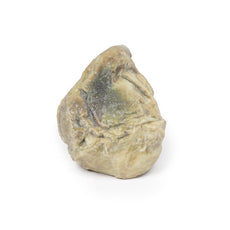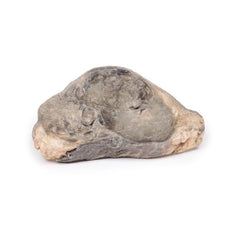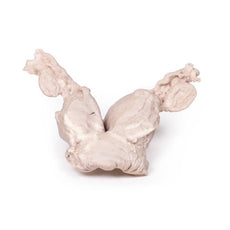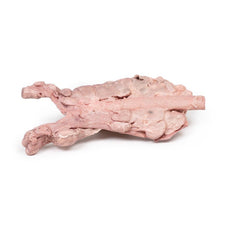Your shopping cart is empty.
3D Printed Ruptured Berry Aneurism
Item # MP2013Need an estimate?
Click Add To Quote

-
by
A trusted GT partner -
FREE Shipping
U.S. Contiguous States Only -
3D Printed Model
from a real specimen -
Gov't pricing
Available upon request
3D Printed Ruptured Berry Aneurism
Clinical History
Five days before admission this 38-year old female experienced the sudden onset of pain
behind the right eye, associated with a slow development of weakness of the left leg. Examination disclosed
left-hemiparesis in a confused hypertensive female. There was also a right homonymous hemianopia and a right
VIth cranial nerve weakness. Clonus was present at ankle and knee on the left, and the left plantar reflex was
upgoing. Lumbar puncture showed a raised pressure and the fluid was blood-stained. Angiography revealed an
intracerebral aneurysm. This was clipped at operation but the day following operation the patient died suddenly.
Pathology
The specimen shows the basal surface of the brain. There is a saccular aneurism 5 mm in diameter at
the junction of the right internal carotid and the posterior communicating artery, which has ruptured. There is
subarachnoid blood in the immediate area in the cisterna magna and on the inferior surface of the right frontal
lobe. There is a similar unruptured aneurysm on the left side. The right frontal lobe appears softer and more
friable anteriorly
Further information
Aneurysms of the posterior communicating artery are the third most common Circle of Willis
aneurysms, and can lead to compression and palsy of closely-located cranial nerves, such as the VIth in this
case. The proximity of the ophthalmic division of the trigeminal nerve to the ruptured aneurysm may also in this
patient explain the sudden onset of pain ‘behind the eye’. The visual field defect is most likely due to
compression of the right optic tract. The clinical manifestations of stroke are a consequence of the territory
of cerebral cortex whose vascular supply is compromised due to the ruptured aneurysm.
 Handling Guidelines for 3D Printed Models
Handling Guidelines for 3D Printed Models
GTSimulators by Global Technologies
Erler Zimmer Authorized Dealer
The models are very detailed and delicate. With normal production machines you cannot realize such details like shown in these models.
The printer used is a color-plastic printer. This is the most suitable printer for these models.
The plastic material is already the best and most suitable material for these prints. (The other option would be a kind of gypsum, but this is way more fragile. You even cannot get them out of the printer without breaking them).The huge advantage of the prints is that they are very realistic as the data is coming from real human specimen. Nothing is shaped or stylized.
The users have to handle these prints with utmost care. They are not made for touching or bending any thin nerves, arteries, vessels etc. The 3D printed models should sit on a table and just rotated at the table.





































































